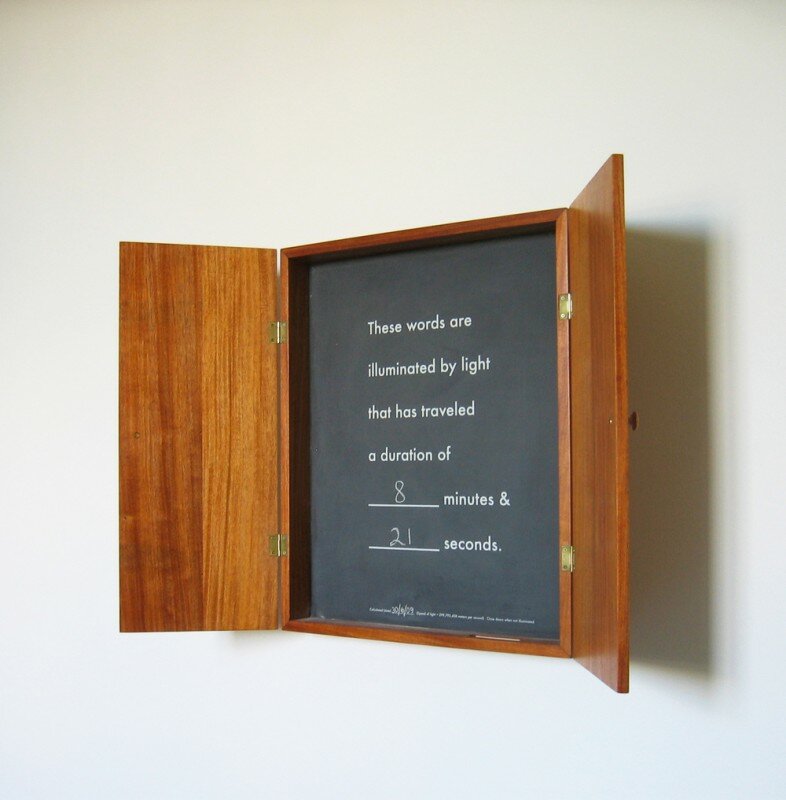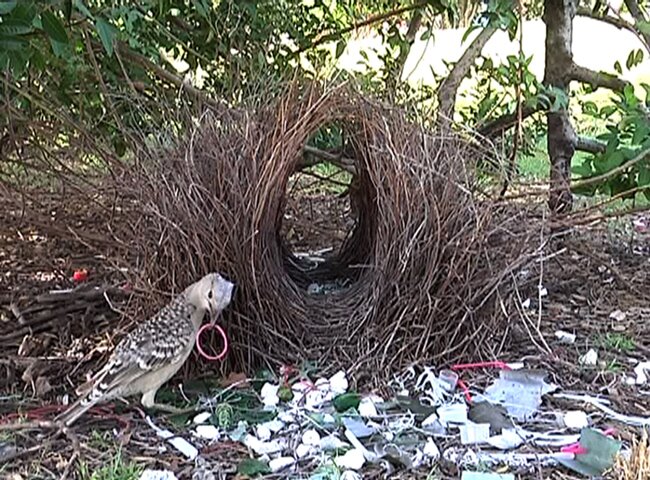 (Matthew Buckingham, Celeritas, 2009 Courtesy the artist and Murray Guy, New York)
(Matthew Buckingham, Celeritas, 2009 Courtesy the artist and Murray Guy, New York)
There is nothing wrong with aimlessly wandering through an art gallery. It is actually a favorite pastime of mine. Passively gazing at works enables me to momentarily silence the whirring microprocessor of my mind, escape myself, and even occasionally make room for creative thoughts to drift in.
But things are a bit different In the Holocene, a far more active gallery experience than the scenario just described; where 8 hours of sleep and a 2nd cup of coffee will do you a world of good. It’s a place where alertness, patience, and the quest for knowledge are rewarded in the form of subtle discoveries that leave you feeling as if you’ve uncovered some tiny secret of the universe.
——
“The exhibition takes its title from Max Frisch’s 1980 novella, Man in the Holocene, in which the narrator gathers selections from encyclopedias and books to preserve knowledge as a deluge threatens to destroy his village. Of particular interest to the narrator is information about our geological present, the Holocene, which includes the development of human civilization. The Holocene is thus our period of geological time, in which we attempt to understand the physical and natural laws that govern the universe and the origins of life, while also coping with the significant extent of our own impact on the Earth’s ecosystems.”
Now that that’s out of the way..
I approached In the Holocene at MIT’s List Visual Arts Center without pretense. I simply came equipped with an open mind and a curiosity as to how such a vast and multi-layered subject would be tackled in a gallery setting.
In the main exhibition hall, I was greeted by Hiroshi Sugimoto’s Lightning Fields #225. A commanding, large scale photograph of a lightning bolt whose iconic presence, albeit impressive, immediately triggered the cynic in me. From afar, I wondered if this preliminary bolt meant I was gearing up for a perfunctory survey of such dense subject matter. Fears of plasma globes and the rest of the Things You Never Knew Existed catalog danced in my head. Fortunately, I was wrong (I should have never doubted you, MIT!). When I approached to read the accompanying wall text for Lightning Fields #225, I realized this was not simply a dazzling photograph OF a lightning bolt, it was a photograph executed BY a lightning bolt. The artist’s hand was that of 40,000 bolts of electricity spidering off a Van der Graaf machine onto photo paper coated in a salt water solution; a mixture which attempts to mimic the composition of “the primordial seas from which life may have arisen”.
(Lightning Fields #236, Hiroshi Sugimoto, please note: Lightning Fields #225 is on view at MIT)
My 13 year-old self piped up to mentally assign “Awesome!” and “Cool!” to this discovery. I then realized this show would not disappoint if I was willing to take a moment to polish off my glasses, read the accompanying texts, and internalize what I was seeing.
My new found “more than meets the eye” lesson was quickly put to the test. Immediately following Sugimoto’s work was a peculiar device, haphazardly dangling like a failed Jacobs Ladder made up of various copper triangles strung from the ceiling. Before casting my go-to cynical snap judgments, I deferred to the wall text…
(Chain of Triangles (from Paris to St. Saturnin), Leonor Antunes)
It turns out, this installation by Leonor Antunes was actually a device modeled after the 18th century land survey that first determined the length of a meter.
“At the time, around 250,000 different units of measurement were being used across France.’The infinite perplexity of the measures,’as one writer described it, inspired a call for a universal means of measurement based on the decimal system and a ‘natural and invariable’ fundamental unit of length. France decided the metric meter should be
1/10,000,000 of the distance from the North Pole to the Equator as calculated by first surveying the distance between Dunkirk and Barcelona. Jean Baptiste Delambre and Pierre Mechain, charged with executing the survey, triangulated the distances between a series of towns, accurately measuring the distance by producing chains of triangles.”
 (Aurélien Froment, Theâtre de poche, 2007, Photo: Aurélien Mole Courtesy the artist, Motive Gallery (Amsterdam)
(Aurélien Froment, Theâtre de poche, 2007, Photo: Aurélien Mole Courtesy the artist, Motive Gallery (Amsterdam)
In addition to intriguing installations that could not be judged by their covers, I felt as though the video components of In the Holocene were some of the strongest aspects of the exhibition.
My personal favorite, Aurélien Froment’s Théâtre de poche (Pocket Theater), is a short film that leaves you feeling excited about the world around you. The artist, conscious of his audience, presents and positions small postcard-like images across a seemingly invisible screen. The scattered pictures are shifted, contemplated, cycled through, and grouped. It sounds like a simple premise, because it is. The strength of the video lies in the range of subtle emotions conveyed by the easy on the eyes artist. For most of the film, Aurélien exudes a sense of wonder, like a young boy eager to show off a prized baseball card collection, a literal Show-And-Tell of the things he holds dear. At other times the artist calculates his image placements with great intensity, acting as if one false step may have dire consequences. Aurélien somehow manages to remain present while simultaneously lost in thought; a dreamer trying to recall a pattern he once knew. Or, digging deeper, maybe the video illustrates the artist’s attempt at making some sense of himself; as if these small, seemingly random images are actually parts of a whole.
Without giving too much away, the exhibit continues to impress and “wow” with explorations of the Clarke belt, an invisible orbit around the Earth where satellites go to die, gorgeous lesser known works by Man Ray, and Germaine Kruip’s video detailing the intriguing habits of the the male bowerbird, a creature who builds an elaborate love nest(aka ‘bower’) adorned with colorful trash treasures to woo its mate.
 (Germaine Kruip, Aesthetics as a Way of Survival, 2009 Courtesy the artist and The Approach, London)
(Germaine Kruip, Aesthetics as a Way of Survival, 2009 Courtesy the artist and The Approach, London)
Throughout all the videos, installations, and accompanying wall texts there is an undeniable emphasis on education In the Holocene, a show that tackles complex theories, calculations, and philosophies that could easily leave your grey matter in the dust. However, accessibility is achieved through careful curation and detailed explanations allowing visitors to engage with difficult concepts instead of feeling left for dead somewhere off the coast of The Schrodinger Equation.
(Trevor Paglen, The Clarke Belt (Dead Communications and Surveillance Spacecraft in Perpetual Earth Orbit), 2012 Courtesy the artist and Metro Pictures, New York)
In the Holocene is on view through January 6, 2013 at MIT’s List Visual Arts Center. More information about the exhibition and accompanying programing is available here. ♥








